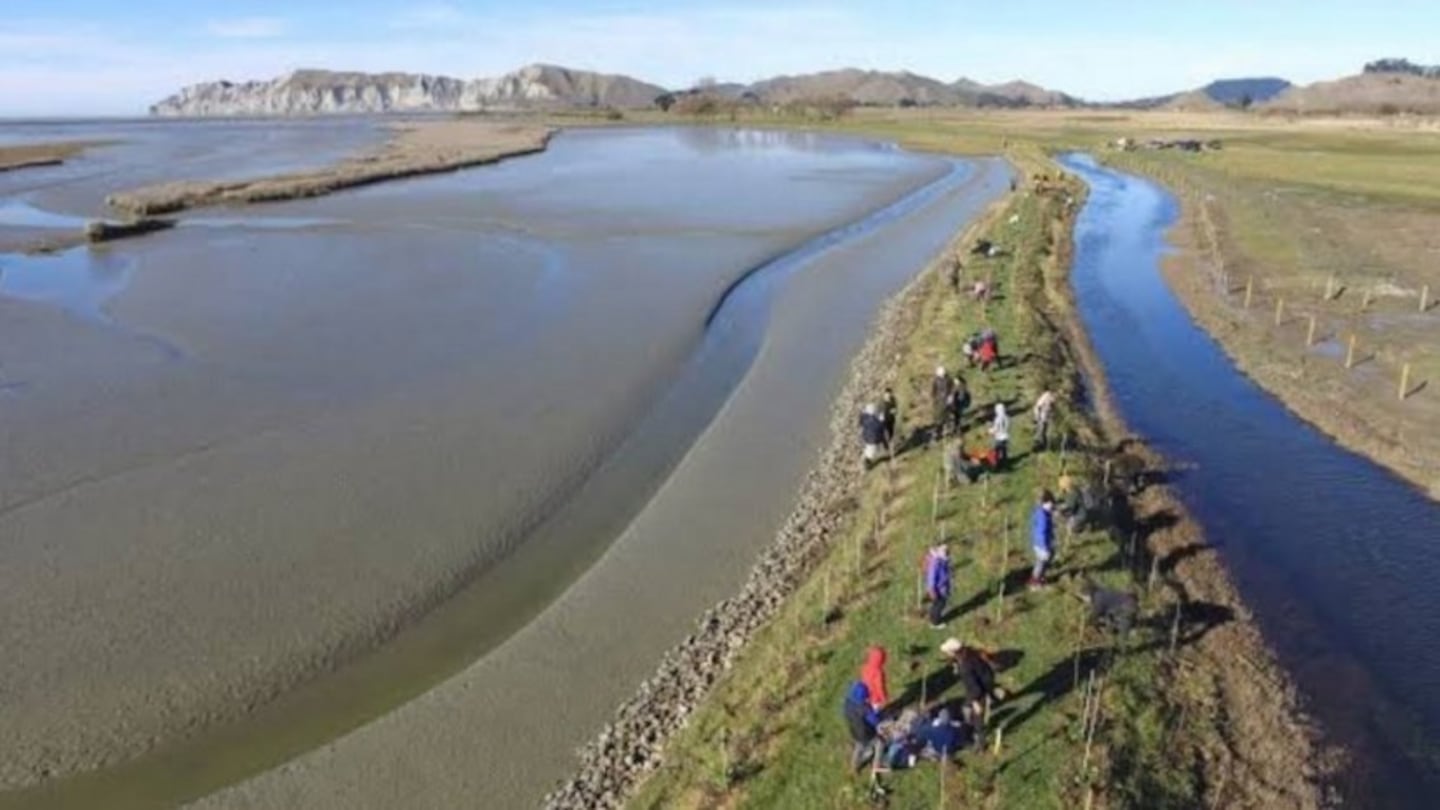Photo / Tairāwhiti Environment Centre
Rongowhakaata Iwi Trust is working towards restoring a significant spawning site for īnanga (whitebait) in Waipaoa, Tairāwhiti.
The project was established in 2015 between mana whenua and the Gisborne District Council over the Pakowhai stream by planting 700 native trees, shrubs and grasses as part of the clean-up.
“We’ve engaged in this mahi to restore vitality back to our Tūranga spaces; cultural, relational and environmental,” Rongowhakaata Iwi Trust environmental specialist Soraya Pohatu says.
In order to achieve restoration, the Environment Centre, Enviroschools, Whitebait Connections, Wai Restoration and the local community have got behind it to improve the spawning habitat, planting harakeke, koromiko, kānuka and tī kōuka on the banks to increase biodiversity and improve water quality.
“The Pakowhai stream has been recognised as one of the best spawning sites in the Waipaoa catchment area and it feeds into the ecologically significant Te Wherowhero lagoon.”
One key factor in the quest is fencing off the waterway, council environmental scientist and īnanga habitat restoration project manager Olivia Steven says.
Īnanga, the most common whitebait species, lay their eggs in grasses along the banks where the saltwater meets the fresh water during a spring tide, which typically occurs once a month from March till July.
“Long grasses, and the ability to move freely in the stream, are essential for a good īnanga spawning habitat,” says Ms Steven.
“We’re trying to achieve broader ecological outcomes by restoring the wider riparian area.”



